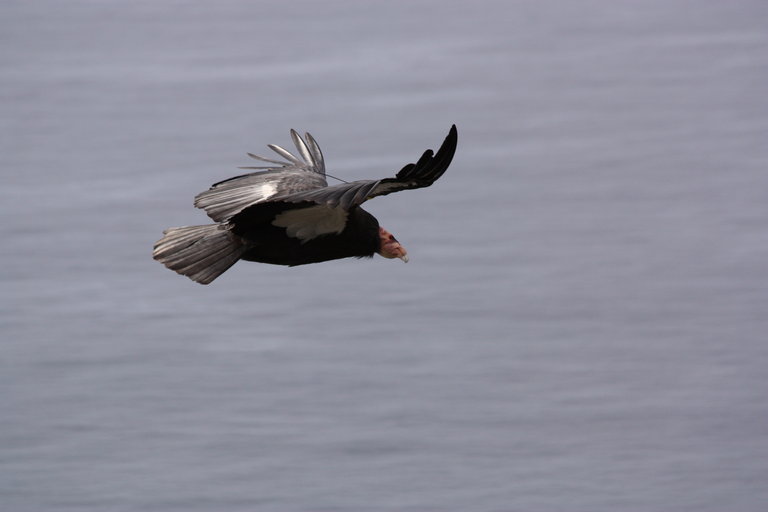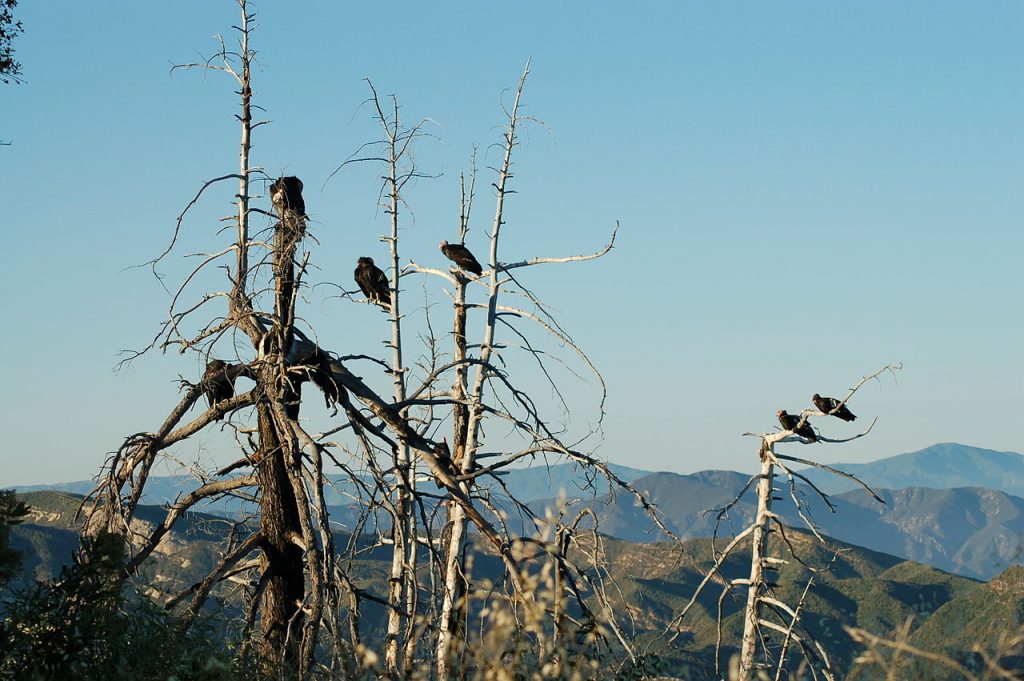
STATUS
Federal: Endangered
State: Endangered
POPULATION TREND
(+) Improving
RESTORATION
Difficult
FAMILY
Cathartidae, the New World vulture and condor family
RANGE
California (Northern Los Angeles County to Big Sur), Arizona near the Grand Canyon, and mountainous areas of Baja California
Important Environmental Factors

Low levels of paved or compacted ground (less than 5%)

High variation in daily temperature

Low to moderate variation in seasonal temperature
Appearance
The California condor is one of the rarest birds in the world. The large, distinctive birds are black, with white stripes on their wings and an orange, featherless head.
Habitat and Behavior
As condors do not migrate, they occupy large home ranges with habitats that serve all of their hunting, nesting, and roosting needs. Due to their large size and wingspan, they require steep terrain to take flight, and rely on upward wind currents to remain airborne. Condors primarily hunt in open grasslands or along the coast, where they feed on carrion, i.e. the carcasses of deer, elk, large livestock, and occasionally smaller mammals. They typically nest in old coniferous trees or the hollow cavities between large rocks.
Threats
The range of the California condor has shrunk significantly. Evidence from the Pleistocene Era (50,000-18,000 years ago) shows that condors were once found in the southwest U.S., and even New York and Florida. Since the 1800s, however, they have been limited to the west coast. In 1968, only 50 to 60 condors existed in the wild; in 1985, nine remained. Historically, the main threats to California condors have been lead poisoning, which occurs when they consume ammunition fragments in the carcasses they feed on, and hunting by humans. Their recovery continues to be impeded by lead poisoning, the consumption of microtrash (e.g. broken down pieces of bottle caps, broken glass, etc.), and habitat loss—due in part to increasing demands for wind energy, as well as the construction of new power lines.
Conservation
Thanks to captive breeding efforts and protective legislation (e.g. the Endangered Species Act), there has been significant growth in condor populations over the past few decades. By 1987, all remaining wild condors were taken into captivity for breeding projects at the Los Angeles Zoo, San Diego Wild Animal Park, and other institutions. Reintroductions began in 1992, and there are now free-flying populations in central and southern California, northern Arizona, and southern Utah. These assisted breeding programs are essential to recovery, which is still relatively slow due to the condor’s naturally long reproductive cycle. Lead poisoning also continue to be a widespread issue in wild populations. Controlling the use of lead ammunition will have a positive impact on the recovery of wild condors.

Data source:
Species records provided by eBird. 2017. eBird: An online database of bird distribution and abundance [web application]. eBird, Cornell Lab of Ornithology, Ithaca, New York.
Acknowledgements:
We would like to thank Ashley Campfield for her research assistance.